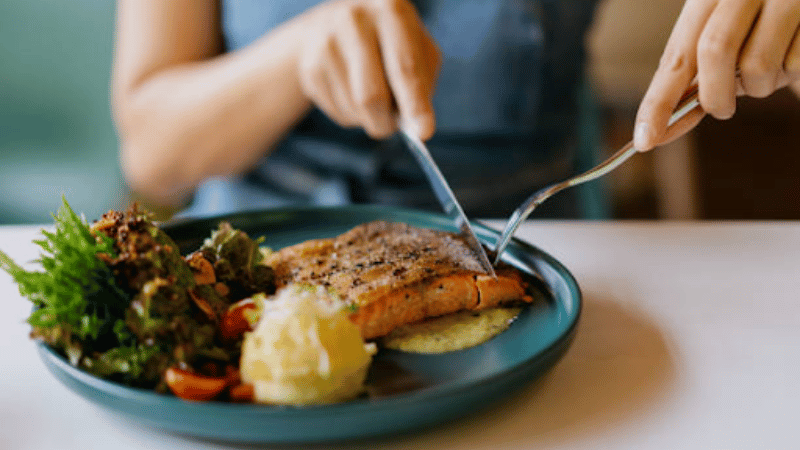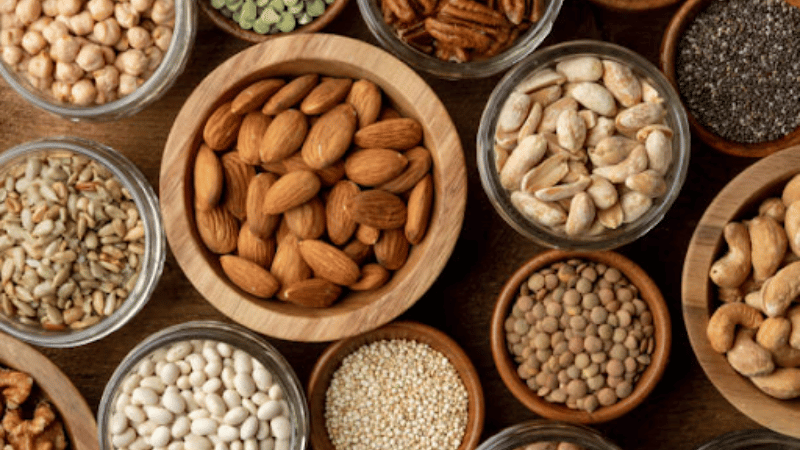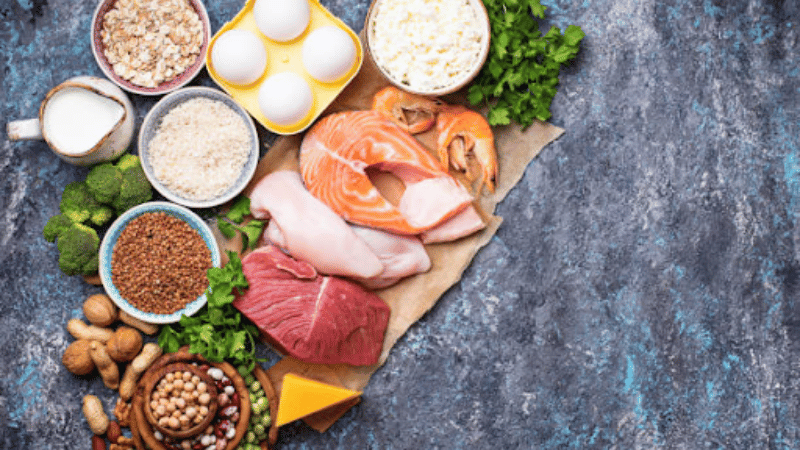Peripheral artery disease (PAD) is a serious vascular condition caused by plaque buildup in the arteries. The plaque can clog the arteries, limiting the flow of blood, oxygen, and nutrients to the lower extremities. When left untreated, PAD can cause serious leg pain, discomfort, and mobility issues.
To manage PAD symptoms and improve overall well-being, it’s recommended that patients prioritize exercise and consume a diet specifically designed for PAD. Eating nutritious foods is a proactive measure to reduce the risk of PAD complications.
In this article, we’ll explore some of the best foods for PAD to help maintain healthy arteries.
Key Nutrients for PAD Management
There are three key nutrients anyone with PAD or with PAD warning signs should include in their diet:
- Omega-3 Fatty Acids: Foods like fish, flaxseeds, and walnuts can help reduce inflammation and improve blood flow.
- Fiber: Whole grains, fruits, and vegetables can help lower cholesterol and improve blood vessel health. Fiber is one component of the best diet for PAD because it attaches to fats in your diet and pushes them out of the system as waste. Without fiber, these fats can be absorbed into the bloodstream and develop into plaque in the arteries. For most individuals, around 25 grams of fiber is recommended per day.
- Fruits and Leafy Greens: Prioritizing fruits and leafy greens may help lower your risk of heart disease and blood pressure.
How Can a Poor Diet Increase the Risk for PAD?
PAD is caused by a buildup of fatty plaque, which comes from bad cholesterol (low-density lipoprotein or LDL) that is left in the blood vessels. Eating a diet high in fats, cholesterol, sodium, and triglycerides can increase your risk for PAD. Too much LDL cholesterol in your blood vessels causes the fatty deposits to harden, restricting the blood flow to your lower extremities.
On the other hand, good cholesterol (high-density lipoprotein or HDL) can bind to other types of cholesterol in the blood before it gets removed from the body, helping prevent plaque from building up.¹ This is called reverse cholesterol transport. HDL will then take the extra cholesterol and transport it back to the liver to be metabolized.
If you’re concerned that an unhealthy lifestyle and poor diet may have led to PAD symptoms, schedule an appointment with a vascular doctor. A vascular doctor can assess your arterial health and provide a personalized treatment plan.
SCHEDULE A CONSULTATION ONLINE
Best Foods for a Peripheral Artery Disease Diet
When building a PAD diet for yourself, you’ll want to include a variety of different foods and nutrients. The best foods for PAD include:
Fish
Fatty fish like salmon, mackerel, and sardines contain omega-3s and heart-healthy nutrients. Other examples include:
- Cod
- Herring
- Lake trout
- Tuna
Fruits and Vegetables
Berries, oranges, spinach, and broccoli are filled with antioxidants. Antioxidants can provide a variety of health benefits that can help protect your arterial health. The following fruits and vegetables also contain antioxidants:
- Papayas
- Bananas
- Tomatoes
- Carrots
- Leafy Greens
Whole Grains
Whole grains like oats, quinoa, and brown rice are an excellent source of fiber and antioxidants. Prioritizing them can also help you maintain stable blood sugar levels. Other examples include:
- Barley
- Amaranth
- Whole grain bread/pasta
- High-fiber cereal
Nuts and Seeds
Nuts like almonds, chia seeds, and flaxseeds are good for artery health and can help lower your risk of cardiovascular disease. Other heart-healthy nuts and seeds include:
- Walnuts
- Pistachios
- Hemp seeds
- Sunflower seeds
Lean Proteins
Switching from red meats to lean proteins like chicken breast and turkey can help lower cholesterol and decrease the risk of heart disease. Other examples of lean proteins include:
- Eggs
- Skinless chicken/turkey
- Legumes
- Tofu
Foods to Avoid or Limit
If you’ve recently been diagnosed with PAD, a vascular specialist can help you create a peripheral artery disease diet. They will recommend a treatment plan for your condition and discuss lifestyle modifications. Tips for maintaining a healthier diet may include limiting your intake of foods containing the following:
- Foods with a high saturated fat content
- Monounsaturated and trans fats
- Animal fats
- Sodium (limited to two grams per day)
Schedule a Consultation with USA Vascular Centers
If you’re concerned about how your diet might affect your risk of or progression of PAD, we recommend consulting with one of our vascular specialists. USA Vascular Centers offers non-surgical, outpatient treatments for PAD that can improve mobility and quality of life. Our specialists can work with you to develop a personalized, comprehensive care plan that may include dietary, exercise and treatment recommendations to support your overall health and well-being.
Give us a call at 888.773.2193 or schedule a consultation online.
FIND A VASCULAR CENTER NEAR YOU
Frequently Asked Questions
Can PAD be reversed with diet?
Eating a healthy diet can help you decrease your risk of developing PAD and prevent worsening symptoms. Enriching your diet with the right foods may also help lower your blood pressure, reduce bad cholesterol intake, and prevent plaque buildup in the arteries. A healthy diet won’t reverse PAD by itself, but maintaining a healthy lifestyle can slow the progression of the condition.
What is the best diet for peripheral artery disease?
The American Heart Association recommends a Mediterranean diet as it has been shown to help improve the quality of life for people with cardiovascular disease.² This diet includes whole grains, fish, fruits, vegetables, legumes, and nutritious oils. Virgin olive oil may help remove excess cholesterol in the arteries and keep the blood vessels open. The Mediterranean diet can also reduce risk factors for obesity, diabetes, high cholesterol, and high blood pressure.
QUESTIONS? TALK TO A SPECIALIST
Sources
- CDC, “LDL and HDL Cholesterol and Triglycerides,” Cholesterol, May 2024.
- American Heart Association, “What is the Mediterranean Diet?,” Nutrition Basics, May 2024.







